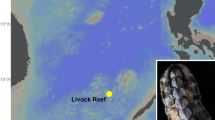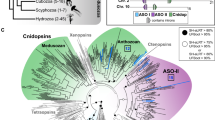Abstract
Evolutionists often use phylogeny to examine independent evolutionary events in search of generality. Therefore, groups of organisms rich in such independent character transitions are particularly valuable for the study of evolution. With respect to eyes, vision, and light-related characters, one such group is Ostracoda (Crustacea). Phylogenies of ostracods, derived from DNA sequence data and morphological characters, are presented. These inferred relationships largely agree with previous assessments of ostracod phylogeny, with the exception of paraphyletic Philomedidae. Based on methods of character reconstruction using these inferred relationships, different groups of ostracods probably evolved both bioluminescence and extreme sexual dimorphism (females lack eyes, males have large eyes) multiple times. Furthermore, myodocopid ostracods may have evolved compound eyes independently of other arthropods. For these and other reasons, it is proposed that the Ostracoda are an exceptionally important group for studying the evolution of vision- and light-related characters.
Similar content being viewed by others
Author information
Authors and Affiliations
Corresponding author
Rights and permissions
About this article
Cite this article
Oakley, T.H. Myodocopa (Crustacea: Ostracoda) as models for evolutionary studies of light and vision: multiple origins of bioluminescence and extreme sexual dimorphism. Hydrobiologia 538, 179–192 (2005). https://doi.org/10.1007/s10750-004-4961-5
Issue Date:
DOI: https://doi.org/10.1007/s10750-004-4961-5




